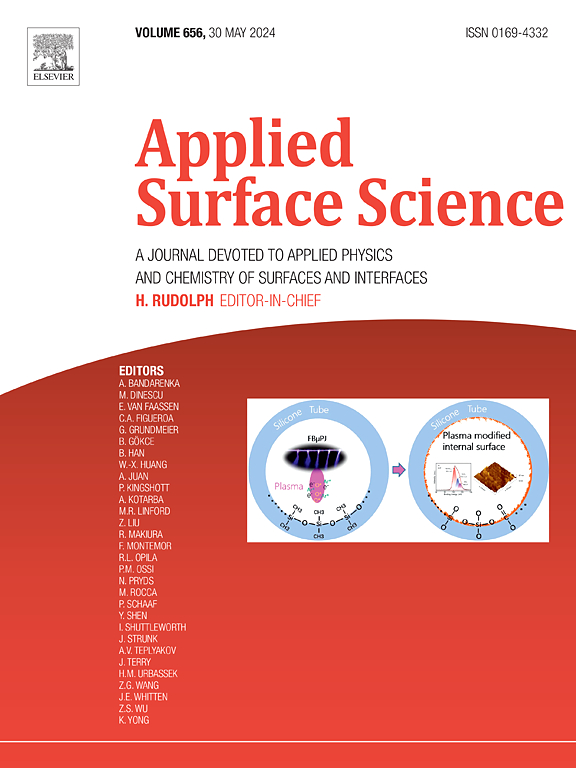Mechanism of fluorescent quenching in ship fuel nitrogen content detection using Nb-doped SnO2 quantum dots as the fluorescent probe
IF 6.3
2区 材料科学
Q2 CHEMISTRY, PHYSICAL
引用次数: 0
Abstract
The mechanism of fluorescence variation in quantum dots (QDs) is crucial for the performance of fluorescence probes. However, the complex mechanisms involved in QDs make the accurate detection of ship fuel nitrogen content (FNC) to mitigate combustion emission pollution a challenging task. Herein, we demonstrate that Nb doping-induced band structure modulation can alter the electronic and optical properties of SnO2 QDs, and use the fluorescence quenching effect to explain the mechanism for detecting FNC. In this study, we established a low-cost, simple-to-operate, high-accuracy, and low-detection-limit method for detecting FNC, based on the fluorescence quenching phenomenon of Nb-SnO2 QDs. The method has a linear range of 0.51 % m/m to 0.66 % m/m, a detection limit of 0.011 % m/m, R2 = 0.99512, and a recovery rate ranging from 95.79 % to 102.2 %. Density functional theory (DFT) calculations were used to analyze the adsorption structures of four typical functional groups –NH2, −SH, –COOH, and –OH on the Nb-SnO2 (110) surface, revealing the adsorption energy and charge transfer during the detection process. It was found that Nb doping enhances the adsorption capability of SnO2 QDs for –NH2. Finally, the fluorescence quenching mechanism was determined to be the photoinduced electron transfer (PET). This mechanism provides important insights for the subsequent doping modulation of QDs’ band structure and optical properties, as well as for the development of other fluorescence probes.

使用掺铌二氧化锡量子点作为荧光探针检测船舶燃料氮含量的荧光淬灭机制
量子点荧光变化的机制对荧光探针的性能至关重要。然而,量子点所涉及的复杂机制使得准确检测船舶燃料氮含量(FNC)以减轻燃烧排放污染成为一项具有挑战性的任务。在此,我们证明了Nb掺杂诱导的能带结构调制可以改变SnO2量子点的电子和光学性质,并利用荧光猝灭效应解释了检测FNC的机制。在本研究中,我们基于Nb-SnO2量子点的荧光猝灭现象,建立了一种低成本、操作简单、高精度、低检出限的FNC检测方法。方法线性范围为0.51 % m/m ~ 0.66 % m/m,检出限为0.011 % m/m, R2 = 0.99512,回收率为95.79 % ~ 102.2 %。利用密度泛函理论(DFT)计算分析了nh2、- SH、-COOH和-OH四个典型官能团在Nb-SnO2(110)表面的吸附结构,揭示了检测过程中的吸附能和电荷转移。结果表明,Nb掺杂增强了SnO2量子点对-NH2的吸附能力。最后,确定了荧光猝灭机理为光致电子转移(PET)。这一机制为后续掺杂调制量子点的能带结构和光学性质,以及其他荧光探针的开发提供了重要的见解。
本文章由计算机程序翻译,如有差异,请以英文原文为准。
求助全文
约1分钟内获得全文
求助全文
来源期刊

Applied Surface Science
工程技术-材料科学:膜
CiteScore
12.50
自引率
7.50%
发文量
3393
审稿时长
67 days
期刊介绍:
Applied Surface Science covers topics contributing to a better understanding of surfaces, interfaces, nanostructures and their applications. The journal is concerned with scientific research on the atomic and molecular level of material properties determined with specific surface analytical techniques and/or computational methods, as well as the processing of such structures.
 求助内容:
求助内容: 应助结果提醒方式:
应助结果提醒方式:


